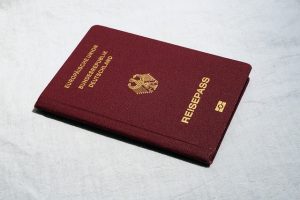The translation of UK children's literature requires a sophisticated approach to bridge cultural gaps while preserving literary essence. Native-speaking translators act as cultural ambassadors, adapting idioms, social norms, and humor to create engaging stories for global young readers. Professional services specialize in this domain, offering age-appropriate translations that maintain the original tone, themes, and unique storytelling styles of UK children's literature. QA processes ensure accuracy and cultural integrity, while collaboration between authors, translators, and editors preserves the magic of these literary works for diverse audiences worldwide.
In the realm of global communication, translation goes beyond mere word substitution—it involves a delicate dance between cultures. When it comes to children’s literature, maintaining the original tone is paramount for engaging young readers worldwide. This article explores various facets of this intricate process, from navigating cultural nuances and the role of native speakers to capturing humor and preserving unique themes in UK children’s literature. Discover how translation services enhance accessibility while avoiding stereotypes, ensuring literary works resonate across borders.
- Understanding Cultural Nuances: A Key to Preservation
- The Role of Native Speakers in Translation Accuracy
- Capturing Tone and Humor: Challenges and Solutions
- Literary Devices and Metaphors: Translating Beyond Words
- UK Children's Literature: Unique Themes and Styles
- Adapting for Age-Appropriate Reading Levels
- Preserving Cultural Context: Avoiding Stereotypes
- Quality Assurance in Translation Services
- Collaboration Between Authors, Translators, and Editors
- Success Stories: Famous Translated Children's Books
Understanding Cultural Nuances: A Key to Preservation

Maintaining the original tone in translations is a delicate task, especially when it comes to adapting UK children’s literature for global audiences. Cultural nuances play a pivotal role in this process as they shape the way stories are perceived and understood. Translators must be adept at interpreting these subtle differences, from idiomatic expressions to social norms, to ensure the essence of the narrative remains intact.
For instance, UK children’s literature often incorporates cultural references and humor that might not translate directly to other languages or cultures. A well-versed translator would recognize and adapt these elements, ensuring they resonate with readers from diverse backgrounds without losing the literary charm. This understanding of cultural subtleties is essential to preserving the author’s intended message and creating a meaningful connection between the translated work and its new audience.
The Role of Native Speakers in Translation Accuracy

Maintaining the original tone in translations is a delicate task, especially when adapting works of literature for different languages and cultures. In the realm of UK Children’s Literature Translation Services, native speakers play a pivotal role in ensuring accuracy and preserving the essence of the text. These translators are not just language experts but also cultural ambassadors, intimately aware of the nuances and idiomatic expressions that make a story captivating for young readers.
Their expertise lies in capturing the author’s intended tone and conveying it effectively to the target audience. By immersing themselves in the source material, they can adapt phrases, metaphors, and play on words that resonate with children while maintaining the literary integrity of the work. This process is crucial when translating UK children’s literature, as it ensures that young readers in different countries can connect with the story, understand its messages, and enjoy the literary experience as intended.
Capturing Tone and Humor: Challenges and Solutions

Maintaining tone, especially humor, in translations is a significant challenge for translators, particularly when it comes to UK children’s literature. The nuances and subtleties that make a text engaging for young readers can be difficult to convey accurately in another language. This is because humor often relies on cultural references, wordplay, and specific grammatical structures that don’t have direct equivalents.
One solution is to employ translators who are native speakers of the target language and have a deep understanding of children’s literature. They should also have a knack for humor and be able to adapt it creatively. Collaborating closely with authors and editors can also help ensure that the translated work retains its original essence. Additionally, using adapted or invented words (neologisms) can capture the playful tone of the original text, while cultural adaptation strategies can make sure the jokes resonate with the new audience.
Literary Devices and Metaphors: Translating Beyond Words

When translating UK children’s literature, going beyond mere word-for-word substitutions is crucial. Literary devices and metaphors play a significant role in shaping a story’s tone, imagery, and cultural nuances. These elements often require creative interpretation to ensure the original intent and emotional resonance are conveyed effectively in another language. For instance, a literary device like personification might be seamlessly woven into the narrative fabric of a UK children’s book, bringing characters to life through human-like attributes. A skilled translator must not only identify these devices but also find equivalent expressions that resonate with young readers in the target culture, ensuring the story maintains its magic and appeal.
Metaphors, as powerful tools for conveying complex ideas simply, demand careful handling during translation. What seems like a simple comparison in one language may not have an exact parallel in another. Translators must strive to find metaphors that not only convey meaning but also adapt to the new linguistic landscape, preserving the literary beauty and intellectual depth intended by the original author. UK children’s literature translation services excel when they recognize these subtleties, ensuring that young readers worldwide can enjoy stories that transcend mere words on a page.
UK Children's Literature: Unique Themes and Styles

UK Children’s Literature is renowned for its rich tapestry of unique themes and styles, making it a fascinating area for translators looking to expand their repertoire. From enchanting fairy tales and whimsical adventures to thought-provoking social issues and diverse cultural narratives, British children’s books offer a wide array of stories that resonate with young readers worldwide.
When translating UK Children’s Literature into other languages, it’s essential to capture the essence of these themes and styles while ensuring cultural sensitivity. Professional translation services specializing in this field understand the delicate balance required to adapt these stories for global audiences. They employ translators who not only possess a strong command of both languages but also have a deep appreciation for children’s literature, allowing them to preserve the original tone and intent of the text. This specialized approach ensures that young readers everywhere can access and enjoy these captivating UK children’s books, fostering a love for literature across borders.
Adapting for Age-Appropriate Reading Levels

When translating UK children’s literature for different age groups, it’s vital to adapt the text to suit each reader’s comprehension level. This process involves careful consideration of vocabulary, sentence structure, and narrative complexity. For instance, translations intended for younger readers might require simpler language and shorter sentences to ensure an engaging yet accessible read. On the other hand, translations aimed at older children can include more sophisticated vocabulary and intricate plotlines, allowing for deeper thematic exploration.
Age-appropriate translation ensures that young UK readers can connect with the story while also providing a meaningful experience tailored to their developmental stage. It’s about striking a balance between preserving the original tone and making adjustments necessary to resonate with each specific audience. This approach not only enhances the overall reading experience but also opens doors for diverse readerships within the vibrant landscape of UK children’s literature.
Preserving Cultural Context: Avoiding Stereotypes

In the realm of UK children’s literature translation services, preserving cultural context is paramount. When translating literary works intended for young readers, it’s crucial to avoid stereotypes and cultural misrepresentations that might arise from literal interpretations. Children’s books often carry subtle nuances, humor, and idiomatic expressions unique to their original culture. Professional translators must grasp these subtleties to convey the essence of the story accurately while adapting it for a new linguistic and cultural setting.
Avoiding stereotypes means more than just replacing words with equivalent terms from the target language. It involves understanding and respecting the diversity within the source culture, ensuring that characters and settings resonate authentically with young readers in the destination market. This delicate balance between translation and cultural preservation ensures that UK children’s literature continues to captivate and educate global audiences, fostering a genuine connection between stories and their readers across borders.
Quality Assurance in Translation Services

In the realm of translation services, particularly for UK Children’s Literature Translation Services, Quality Assurance (QA) plays a pivotal role in maintaining the original tone and essence of the work. Beyond mere word-for-word conversion, QA involves meticulous processes to ensure the translated text not only accurately conveys the meaning but also captures the cultural nuances, literary devices, and emotional undertones of the source material. This meticulousness is crucial for preserving the appeal and impact that make UK children’s literature so beloved worldwide.
For UK Children’s Literature Translation Services, QA involves multiple stages. It starts with a thorough review by in-house experts who scrutinize the translation against the original text. This initial check ensures grammatical correctness, fluency, and adherence to the literary style of the source work. Subsequent rounds involve peer reviews and sometimes client feedback sessions to iron out any discrepancies or cultural misinterpretations. Advanced tools like machine translation memory and terminology databases also come into play, helping translators maintain consistency across large projects and ensuring that specialized terms are accurately translated each time they appear.
Collaboration Between Authors, Translators, and Editors

In the realm of UK children’s literature translation services, collaboration between authors, translators, and editors is a game-changer. This harmonious interplay ensures that the original tone, essence, and cultural nuances of a story are meticulously preserved during the translation process. Authors bring their unique creative vision, while translators interpret and adapt it into another language, often with specialized knowledge in children’s literature. Editors then play a crucial role in refining the translated text, ensuring grammatical correctness, readability, and fluency in the target language—a testament to the power of teamwork in enhancing literary works for young readers across borders.
Through this collaborative effort, UK-based children’s literature translation services can navigate the labyrinthine process of translating children’s books, fostering a vibrant tapestry of stories accessible to diverse audiences worldwide. This collaboration not only preserves the integrity of the original work but also enhances its potential to resonate with kids from different cultural backgrounds, creating a lasting impact in the global children’s literature scene.
Success Stories: Famous Translated Children's Books

The world of children’s literature is a vibrant and diverse landscape, and one of its most significant aspects is translation—bridging cultural gaps to make stories accessible globally. UK Children’s Literature Translation Services have played a pivotal role in this regard, ensuring that tales from around the world find their place on shelves in homes across the UK.
Consider classic works like “The Very Hungry Caterpillar” by Eric Carle. This beloved story has been translated into countless languages, bringing its message of growth and perseverance to young readers worldwide. Similarly, “Where the Wild Things Are” by Maurice Sendak has captivated children and adults alike with its imaginative narrative, thanks to successful translations that capture the essence of the original text. These success stories highlight how translation services not only facilitate understanding but also enrich cultural experiences for UK children, offering them a glimpse into different worlds and perspectives.
The world of UK children’s literature translation services is a complex yet rewarding landscape. By navigating cultural nuances, leveraging native speaker expertise, and embracing collaboration, we can ensure that stories from this vibrant tapestry are accurately preserved for readers worldwide. Each book, with its unique tone, humor, literary devices, and cultural context, offers a chance to build bridges between communities, fostering understanding and appreciation through the power of storytelling.
